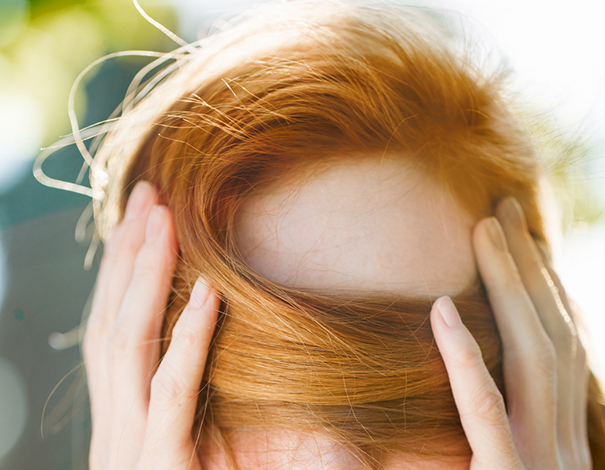Rosacea
Rosacea is a chronic skin condition that causes redness and small bumps or pimples on the face. The good news is that you can control rosacea. Learn more about getting the right treatment and avoiding the triggers of rosacea.What is rosacea?
Rosacea, also called “acne rosacea”, is a chronic skin condition that causes redness mainly on the nose, cheeks, forehead and chin. Over time, this redness becomes permanent, and small dilated blood vessels appear. Small red bumps or pimples (with or without pus) may also appear.
Some people feel embarrassed by these skin changes, which can affect their self-esteem and quality of life.
Rosacea or couperosis?
These conditions can be confused; however, couperosis refers to the dilation of small blood vessels, which is a symptom of rosacea.
Rosacea affects about 2% to 3% of adults and starts around the ages of 30 to 50. Over half of people with rosacea also get symptoms in the eyes, such as redness, dryness, or the feeling of having sand in the eyes (also called “ocular rosacea”).

What causes rosacea?
The exact cause of rosacea isn’t known, but it could be related to factors that trigger small blood vessels in the face to dilate. It particularly affects people with pale, dry and sensitive skin who blush easily from strong emotions (embarrassment, anger). People with rosacea often have a family history of the condition, although a clear genetic link has not been established.
Although often called “acne rosacea,” rosacea is not a form of classic acne and is not contagious. It is also not caused by a lack of hygiene or a lack of face washing.
Rosacea triggers to avoid
One of the best ways to limit rosacea symptoms is to avoid the things that trigger or exacerbate them:
- spicy foods and hot drinks (tea, coffee)
- alcohol, particularly red wine
- stress and strong emotions, such as anger
- very intense physical activity
- exposure to the sun and wind
- very hot temperatures (e.g., very hot baths, overheated rooms)
- very cold temperatures (e.g., exposure to cold in the winter or to freezers)
Rosacea treatment
Rosacea can’t be completely cured, but with the proper care, you can prevent symptoms from appearing or getting worse.
Some prescription medications are effective at treating the redness. Depending on the severity, rosacea can often be treated with a topical medication (cream, gel, lotion or ointment). Metronidazole, ivermectin, azelaic acid, brimonidine and tretinoin are topical medications whose effectiveness has been demonstrated.
In more severe cases, oral medication may be necessary. These include oral antibiotics, such as isotretinoin (Accutane™).
Laser treatments and light therapy can also help repair broken blood vessels that don't respond to topical creams or oral medications.
Talk to your pharmacist or doctor.
Tips and advice
By avoiding your triggers and adopting the following daily care routine, you can calm your rosacea outbreaks. First, use a mild face cleanser and unscented moisturizing cream. Then, apply a sunscreen with an SPF 30 or more, especially before going out in the sun for a long time. You can also try using camouflage makeup with green pigment, which can help hide the redness.
Don’t hesitate to ask your pharmacist for advice to make the best choice for you.
The pharmacy services presented in this section are offered by pharmacist owners who are affiliated with Proxim. The pharmacists are solely responsible for the professional activities carried out during the practice of pharmacy.
The information contained herein is provided for informational purposes only and is not intended to provide complete information on the subject matter or to replace the advice of a health professional. This information does not constitute medical consultation, diagnosis or opinion and should not be interpreted as such. Please consult your health care provider if you have any questions about your health, medications or treatment.
